- Administrator
- Albums and Singles
 After their fantastic second album, Pelican return with City of Echoes. It is another quality performance from the boys but it does not always reach the same highs as The Fire in our Throats will Beckon the Thaw or the intensity of their live performance. That being said, Pelican are still on top of their game. It's just unfortunate that they have previously proven themselves to be so good that all their new music is subject to tougher scrutiny.
After their fantastic second album, Pelican return with City of Echoes. It is another quality performance from the boys but it does not always reach the same highs as The Fire in our Throats will Beckon the Thaw or the intensity of their live performance. That being said, Pelican are still on top of their game. It's just unfortunate that they have previously proven themselves to be so good that all their new music is subject to tougher scrutiny.
City of Echoes, there is always a glimmer of sunshine present. Right up the closing notes of "A Delicate Sense of Balance," the group keeps my spirit high, which is a delightful change to being aurally assaulted. It leaves me with renewed vigor for an aural assault after Pelican.
I am surprised that they have not made a bigger name for themselves considering the likes of Isis and Tool have done so. Perhaps it is the lack of vocals that is stopping them from moving up the sales ladder but their sound is very open in terms of appeal while still keeping their credibility. There are a few moments on City of Echoes with nods towards mainstream stadium rock which are bombastic enough to transcend any mental images of a guitarist standing on a cliff face wailing on his guitar. Of course, there is also the pummelling power that is expected from Pelican but it is the blending of cool influences with usually suspect ones that make this music work; "Lost in the Headlights" sees the ghosts of Black Flag and Metallica duking it out. It should be cheesy but it isn't, especially towards the end when all influences become fully assimilated.
Credit is due to Aaron Turner for his work on the album's sleeve: the seaweed-like tendrils with the gloss spotted text combine beautifully to reflect the music. It is too bad that the same effort is not put into all of Hydra Head's releases but obviously Turner does not have the time to do a lot of design on top of his already busy schedule. Although, once he keeps getting the all important music out on his label then I have little reason to complain.
While City of Echoes is not their best album, it would be churlish of me to suggest that it is anything short of great. Pelican continue to impress me and I look forward to hearing how this material pans out live considering the stage is their true calling in this life. Luckily, they are not exactly dull in the studio so I will be giving this its fair share of spins in the meantime.
samples:
Read More
- Administrator
- Albums and Singles
 While experimental and ambient musics had previously focused their instrumentation on the latest technology, the pendulum has shifted as it often does, and the guitar is once again "cool" to use. French guitarist Johannes Buff takes this approach, treating and affecting his guitar with a backing of unprocessed field recordings, resulting in an alien, yet familiar sound.
While experimental and ambient musics had previously focused their instrumentation on the latest technology, the pendulum has shifted as it often does, and the guitar is once again "cool" to use. French guitarist Johannes Buff takes this approach, treating and affecting his guitar with a backing of unprocessed field recordings, resulting in an alien, yet familiar sound.
Knell does do drone, as many with a six string these days do. However, Buff's approach to it is not monolith riffing, but rather an obsessive attention to single string vibrations, which open up the first of two massive, untitled pieces on this disc. The rumbling metal vibrations are met with looped field recording sounds which all eventually give way to recognizable guitar strums. Unlike a lot of recordings like this, Knell is not afraid to let the characteristic tone of his instrument shine through at times. As it continues, the guitar morphs into pure feedback screech as well as a swarm of insects before ending on that gentle guitar tone over birds chirping in the distance.
The second track is more deterministic in its sound, opening with gentle guitar strums over field recordings of a rainy day. The mix builds in intensity, as the guitar becomes a massive electronic drone that increases in intensity and volume until it is a sustained wall of noise, all before ending on a restrained note of a field recording. Interestingly enough, even during the most intense parts of this track, it never feels too harsh or violent, it manages to retain a gentle warmth throughout.
Last Ten Meters has some of the elements of the '90s isolationist movement in ambient music, but instead of relying on audio processing (such as Main or similar artists), the innate sound of the guitar is allowed to come through at times, giving it a less synthetic, more organic feeling throughout. It is a fascinating, unique sounding work made all the better by its gorgeous packaging, a staple of the Utech label.
samples:
Read More
- Administrator
- Albums and Singles
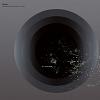 Its dark grey sleeve depicting a black sphere is an aberration in Rune Grammofon's usually bright and cheerful aesthetic and indeed the third album from Ultralyd promises to be a much more intense ride than most of the label's output. The sleeve does not mislead: this is the long night of Norway made music and this is a powerful and brilliant album that is as a far cry from the usual merry styles of Ultralyd's label mates.
Its dark grey sleeve depicting a black sphere is an aberration in Rune Grammofon's usually bright and cheerful aesthetic and indeed the third album from Ultralyd promises to be a much more intense ride than most of the label's output. The sleeve does not mislead: this is the long night of Norway made music and this is a powerful and brilliant album that is as a far cry from the usual merry styles of Ultralyd's label mates.
From the get go, Ultralyd build up a threatening atmosphere on Conditions for a Piece of Music but never give over entirely to creating a mood. The music here never becomes just a soundscape or noodling; they can put out a solid groove when they need to. "Comphonie III" has a fantastic (albeit simplest) saxophone line that captures my attention from the first note blown. It is only later that the textures being played on the guitar and bass underneath the sax become apparent. This is a common motif to the album; a powerful groove handcuffs the listener to a proverbial radiator and from there the rest of the band terrify the listener into submission with squalls of feedback and reverb drenched howls.
There is a dichotomy at the heart of Ultralyd's music. On one hand, they can be very, very funky—the drumming and sax on "Comphonie V" could have been lifted from a classic James Brown track—on the other hand, on pieces like "Musica Imperativa," they explore the outer regions of music where things are darker and very unfunky, creating full pieces of music out of blasts of music that would be the freak out in any other artist's work. The combination of these two different approaches makes for a unique experience. The label makes a big deal over the jazz side of Ultralyd but it is not jazz nor rock by any stretch of the imagination, it is the twisted wreckage of music being bent into new and exciting shapes. Listening to Conditions for a Piece of Music makes me think of the phrase used to describe Nurse With Wound: "Think jazz, think punk attitude."
Ultralyd have created a beautiful monster on this album, blowing their previous releases out of the water (which is some feat!). Conditions for a Piece of Music is by far one of the most unique sounding albums of this year, providing a challenging but utterly satisfying body of music.
samples:
Read More
- Administrator
- Albums and Singles
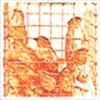 Martyn Bates' elusive work as Migraine Inducers issued before his involvement with Eyeless in Gaza finally gets released on CD. Originally circulated on cassette in a tiny quantity as Dissonance/Antagonistic Music in 1979, it later saw a marginally wider release in the United States in somewhat abbreviated form. The complete version of this legendary album is included here, as is a second disc recorded in 1994 with Gaza partner Peter Becker to complete the work.
Martyn Bates' elusive work as Migraine Inducers issued before his involvement with Eyeless in Gaza finally gets released on CD. Originally circulated on cassette in a tiny quantity as Dissonance/Antagonistic Music in 1979, it later saw a marginally wider release in the United States in somewhat abbreviated form. The complete version of this legendary album is included here, as is a second disc recorded in 1994 with Gaza partner Peter Becker to complete the work.
Although released in a small quantity, it did not go unnoticed. In fact, an early fan was Geoff Rushton, who wrote of it in Stabmental as "violent, anti-music" and even asked permission to use some of it for a "suicide performance." Haunting and gritty, this music may surprise Gaza fans accustomed to melody and structure. Bates himself called this work a "scream of frustration," and the description is apt.
Using things like electric guitar, food blender, chair springs, various percussion, motors, marbles, radio, and voice, Bates creates a howling and rusty landscape unlike anything heard before. Tape manipulation, loops, and effects further splinter the chaos. At times it sounds like Bates is disemboweling his instruments, evincing every last sound they're capable of producing like a shaman practicing a maddening form of divination through technological evisceration. When his voice appears, it is masked and mutated beyond recognition, pared down to its most primal parts. Even so, Bates isn't above throwing in bits of melody with electronics or his guitar, yet these respites are brief, only serving to create a longing for structure that's never adequately resolved. Bates further confounds listeners by not giving the tracks any definitive titles. Although he gives evocative suggestions such as "Child Squashing Frog," "Mona Lisa's Sister and Subsequent Burning," or "Dead Seahorse With Sky Melting," the nine listed titles do not nearly cover the 21 tracks found on the first disc alone. Clearly, the music is open to interpretation even as it sets the imagination on fire.
Becker helped Bates complete another version of Dissonance in 1994, included here as a second disc. Technological advances don't overshadow the intent of the original, if they're even utilized at all, and the duo do a remarkable job of unlearning or forgetting all of their musical accomplishments as EIG. The terrain they cover here is similar to Bates' original, if a bit more studied and patient in places, yet it surprisingly recalls the previous work quite accurately considering that 15 years had passed since the original. While the yearning for some sort of closure is a different creative impulse than that which sparked the original, the harrowing results are much the same.
Despite their limitations in fidelity, these recordings still sound as fresh and bizarre as anything I've heard in years. Now that they're available to a wider audience, Bates' reputation as an innovator and restless investigator of sound is more deserved than ever.
samples:
Read More
- Administrator
- Albums and Singles
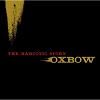 While The Narcotic Story is not Oxbow's best, there are some great songs on it that refine their bluesier side but there is not as much of the heavy Oxbow that has flexed its muscles on previous releases. However, it is far from a bad album and certainly will not disappoint those who have enjoyed their output so far.
While The Narcotic Story is not Oxbow's best, there are some great songs on it that refine their bluesier side but there is not as much of the heavy Oxbow that has flexed its muscles on previous releases. However, it is far from a bad album and certainly will not disappoint those who have enjoyed their output so far.
Oxbow get right into the thick of things with "The Geometry of Business." Its mixture of raw bar room brawl blues sound with the agony of daily existence found is strongly indebted to Nick Cave and the Bad Seeds, particularly their first few albums and EPs. Throughout The Narcotic Story it is hard not to insert your own Cave-style "Yeah" into many of the songs. Although Oxbow are musically exploring a similar style as the Bad Seeds, they do not slip into pure copycat mode. Oxbow's distinctive stamp is all over the music and Eugene Robinson's vocals are a world away from Cave's croon. His yelping style dispenses with clarity (I honestly have little clue as to what he is singing) but his delivery is absolutely brimming with emotion. It can get tiring after a while, not that it is irritating but that it is mentally tiring to listen to a man screaming out his anguished thoughts for 45 minutes.
There is also a very strong cinematic feel to The Narcotic Story: the use of string sections throughout the album soften the burly and masculine nature of some of the songs. "She's a Find" could be a tough listen were it not for the strings and piano which allow the band to pull back and explore the song fully over its nine minutes. I did find this track a little clichéd and cloying on first listen but it has proven to be one of the better moments on The Narcotic Story once I got into it. The album sounds great in terms of production, these more restrained songs need a sensitive touch in the studio and thankfully that is what they got.
Some of the album does get too derivative. "Down a Stair Backward" and "Frankly Frank" are both based around fairly standard blues structures but without any elements of innovation, only Robinson's singing makes them stick out at all and even at that these are not his best performances. These less than spectacular tracks are only the exception, most of The Narcotic Story is solid but unfortunately the flow of the album is disrupted by these songs. For the moment skipping these songs makes a big difference but considering I found it hard to get into some of the other songs, there is hope that they will grow on me too.
samples:
Read More
- Administrator
- Albums and Singles
 The sound of a western town at dawn gone mad with isolation, We Are Him is a document of Gira's manic undulations through blues, country, blackened rock 'n' roll, and primal exorcism. It is a sullen, fallen, redemptive, contradictory plea to touch the light and joy of God or to know that suffering is our final and only fate.
The sound of a western town at dawn gone mad with isolation, We Are Him is a document of Gira's manic undulations through blues, country, blackened rock 'n' roll, and primal exorcism. It is a sullen, fallen, redemptive, contradictory plea to touch the light and joy of God or to know that suffering is our final and only fate.
The Angels of Light come to this record with all guns blazing: a brief and dramatic piano run introduces a pulsing, violent, aquatic rhythm scored by an erupting organ and a near prophetic vocal delivery. It's a stream of sound that comes complete with undertow, its unrelenting stomp dragging the music out towards the endless sway of the sea. "Black Water Song" begins the album in medias res, the tumult of what is to come foreshadowed by the thick-veined madness in Gira's voice and the boiling hysteria in the band's crashing skulls. The world has either come to an end or it is already falling apart at the seams with paranoia, sickness, and red, red rivers. When "Promise of Water" begins all the craze of We Are Him's opening song is tempered; the gnashing of teeth is here a slow march through the desert with the light of hope still lifting the world's feet forward. As the music progresses, Gira and his entire cast of characters slowly transform day into night and chart a slow decline into bitterness, resentment, and perpetual doubt. Bit by bit the curtain begins to fall on the stage and then, in a sudden and unexpected twist, the sun rises, the rain falls, and The Angels of Light transform perverse chaos into celebration.
"Joseph's Song" turns the band on its head. A Beatle-esque brass section opens the song up with a kind of brightness I wouldn't expect from anything Gira touches. The lyrics betray the cheerful arrangement of the song, but all in all it casts a new light upon the rest of the album, marking the end of its descent and the beginning of its ascent towards something like reconciliation. "We Are Him" begins with the celebratory chant, "Let him in / Let him in / Let him in" and is propelled by the country twang of a silver-tongued guitar and a choir's bristling response to Gira's throaty dirge. It's as though all the darkness of the first five tunes has been temporarily alleviated, all inward movement directed outwards and upwards towards the heavens. Even the languishing "Sometimes I Dream I'm Hurting You" is colored by mention of prayer and love. As it pirouette's into an organ sparked rock tune, Gira calls out for a flaming sword: if there must be end, let us all hope we can accept it and slip into the fold of life without hesitation.
There's little I can say about We Are Him that is negative. Akron/Family's influence on Gira's music is more evident than ever, but his song-writing ability is far beyond the band's own and the two talents exist in near total harmony. Hearing Gira more fully embrace the country and blues roots of his recent output is welcome and the songs are stronger for it. "The Man We Left Behind" and "Star Chaser" are in competition with each other for song of the year and both open their arms to the buzzing tilt of American music. If there is anything to complain about, it's that some of the aggression on the record sounds forced, especially in the case of "My Brother's Man." Gira's lyricism has progressed since his sadistic chants to love and violence with Swans, but now and again he deems it necessary to fall back on self-destructing metaphors and unnecessarily crude deliveries. The performances of many of these songs demonstrate profound intimacy and delicacy, the nimble cadence of their procession is capable of reaching into madness and joy more completely than any forced profanity could. Hearing him deliver "Mary Lou / F-f-f-fuck you" with such a flat tone is disappointing (almost embarrassing) when positioned next to the more effective subtlety of "The Visitor."
The Angels of Light have, however, crafted their most perfect and fully-realized album. Fans of New Mother and other purists might have my head for such a comment, but after 25 years of near continuous output Gira sounds most sure of himself on this record. The confidence in the music is naked, its multi-faceted elements each shining through without hindrance.
Read More
- Administrator
- Albums and Singles
 On their latest for Rephlex, the loyal Brothers D'arcangelo synthesize praiseworthy tracks bubbling with such nostalgic tension that, much to my amazement and delight, I want to care about IDM all over again. While everyone else seems preoccupied with that old tired is-it-AFX-or-not debate over The Tuss' latest releases for the label, they should be giving it up for these guys instead.
On their latest for Rephlex, the loyal Brothers D'arcangelo synthesize praiseworthy tracks bubbling with such nostalgic tension that, much to my amazement and delight, I want to care about IDM all over again. While everyone else seems preoccupied with that old tired is-it-AFX-or-not debate over The Tuss' latest releases for the label, they should be giving it up for these guys instead.
For obvious reasons, I had essentially written off this style of music completely and moved on to sounds less stubbornly stationary. Yet I was willing to give D'arcangelo's new album a shot based on the strength of their back catalog, underrated though it may be. Like any underdog worth rooting for, the duo of Fabrizio and Marco D'Arcangelo has consistently remained in favor with a dedicated group of enthusiasts, though like many such acts in the post-Artificial Intelligence set the act never reached the levels of scenester popularity of those oft-cited names I wont bother repeating here. I'm far more interested in what these Italian stallions are doing these days than being suckered into another manufactured viral marketing scampaign of pondering who's behind the latest Rephlex or Warp pseudonym. As Eksel clearly evinces, D'arcangelo has no need for such blatant unit-shifting gimmickry as has been employed in the cases of braindancers like Astrobotnia, Chris Clark, Global Goon, and, most recently, The Tuss.
Anyone even casually familiar with D'arcangelo knows what to expect from the project. Alive with frenetic and stuttering breakbeats and romantically resonant Detroit flirtations, Eksel gouges lavishness and beauty from the familiar well-mined caverns of "intelligent" electronic music. From the gurgling mechanical undertones of "Ternat" to the adorned sonic streams of the subdued "Elix," the album steers clear of technical, Autechrean anal mania and instead basks in the quaint luminescence of glorious melody. Teeming with pensiveness and bliss, the emotive electro-pop gem "A Grey Sunday" smacks of a new wave influence and near-fetishism that so many listeners have already picked up on before. Smashing, bristly snares and a gelatinous bassline combine on the rubbery funk of "The Asker," while "Nadine" swaggers and sweats with its sultry yet subtly robotic eroticism.
The highlight of this set, "H13," arouses mushy memories of a time when drippy ambience and trippy beats went hand in hand. If chillout rooms were still abundant today, this soul-gazing track could go on infinite loop for hours without overstaying its welcome. That ever-present mood, so palpable that it can not only be absorbed but also nearly embraced, makes Eksel such a heavenly, indispensable record meant to be consumed in either glacial darkness or radiant sunlight. D'arcangelo has made music to make us feel again, to get lost inside ourselves without fear of debt or death, and for that we should be thankful.
samples:
Read More
- Administrator
- Albums and Singles
 The latest release from Norway's hungriest noise composers is comparatively a more subdued affair, and it is much more subtle than its boisterous title would have one to believe. John Hegre and Lasse Marhaug present a noteworthy combination of heavily controlled guitar feedback and studio treatments characterize the work as a whole, but each piece is very different from the next.
The latest release from Norway's hungriest noise composers is comparatively a more subdued affair, and it is much more subtle than its boisterous title would have one to believe. John Hegre and Lasse Marhaug present a noteworthy combination of heavily controlled guitar feedback and studio treatments characterize the work as a whole, but each piece is very different from the next.
Opener "God Damn This Ugly Sound" is less an exercise in composition and more in locating, as it is a six-minute excerpt from a medical record documenting the sounds of various diseases. The rest isn't as obtuse, as it segues nicely into the looping guitar feedback and shrill squeal of "Blues for Sterling Hayden," which could easily be an exercise in sheer noise blast, but is instead a carefully controlled track that demonstrates just how subtle the duo can be, even under such 'extreme' conditions. Structurally similar is "A Bucket of Mayo," which is built out of feedback fragments and the warm crunch of vinyl surface noise.
Marhaug can't help but show his noise chops he has honed in his solo career, and "Not Half Bad to the Bone" demonstrates his penchant for explosive bassy blasts, yet lurking under the crunch are some subtle, melodic tones that the average band wouldn't have bothered with. The ending series of false starts from a live band is a nice touch as well. "Tentacles of Broken Teeth" is somewhat reminiscent of Marhaug's recent collaboration with Nils Henrik Asheim on Touch, all massive, cavernous reverbs and expansive metallic drones, but here a bit more harsh and distortion oriented.
The centerpieces of the disc are the two massive lengths tracks—the aforementioned "Blues for Sterling Hayden" and the title track—the latter being a more controlled affair of synth tones feedback, and even a bit of dark ambience. The long tracks especially show this duo's flair for creating beautifully structured chaos.
Balls the Size of Texas, Liver the Size of Brazil cannot neatly be labeled as a 'noise' work, but it certainly has the elements that fans of Marhaug's solo work will enjoy, but enough compositional and structural elements that anyone who understands the appeal of esoteric music would love as well.
samples:
Read More
- Administrator
- Albums and Singles
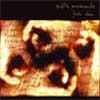 Released with the help of United Dairies and Jnana Records, Freida Abtan's music is a strange cinematography of metaphysical conundrums and invisible events. Contained herein is time frozen, inspected, and unwoven into infinite threads of unusual shapes and proportions. Abtan's subtle flourishes are impressive, sometimes simultaneously fantastic and terrifying, but they do not add up to a wholly consistent album.
Released with the help of United Dairies and Jnana Records, Freida Abtan's music is a strange cinematography of metaphysical conundrums and invisible events. Contained herein is time frozen, inspected, and unwoven into infinite threads of unusual shapes and proportions. Abtan's subtle flourishes are impressive, sometimes simultaneously fantastic and terrifying, but they do not add up to a wholly consistent album.
United Jnana
Abtan's sounds are magical and transportive; their vivid fidelity and unequivocal crispness weave particular narratives with no small degree of confidence. From the beginning her work is organic, sounding less like music and more like the recorded adventures of an entrepreneurial and esoteric detective probing the deepest recesses of haunted caverns and finding hidden worlds tucked away there. In this way the title of her album reflects its content; that which is hidden, unnoticed, or too subtle is brought to the fore by Abtan's careful arrangements and given a detailed survey. An entire spectrum of insectoid percussion and globular synthetics are revealed in her compositions, their microscopic lives brought to life by gusts of electricity and storming spirits trapped behind a veil of static and other interference. What Abtan does best on Subtle Movements is construct a believable world of sounds, each unique and absorbing in their various depictions. She's captured the megalomaniacal rituals of a modern electrical shaman on tape, teased from the air the tortured confessions of a now reformed specter, and ploughed the ether in order to return a report of all its miniscule interactions.
What she hasn't done is found a convincing way to tie all the imagery together. Subtle Movements is split into 12 uneven portions, some of them only a minute and a half in length, the longest, "Shimmer and Dissolve," stretching just beyond 20 minutes. Many of the pieces feel as though they could endure for at least as long as "Shimmer and Dissolve" does. When "The Works and Days of Hands" comes to an end, it is too soon. This would all be a tiny complaint, but there are also cases where the flow from one track to the next is inconsistent, causing the album to feel a bit bumpy where a more considerate transition would've made for a more immersive album. That seems to be the name of Abtan's game after all: these are all worlds of movement, detailed expressions of everything that goes on beneath any surface that are meant to consume the listener and erase whatever is going on beyond the reach of headphones or speakers. If this were meant to be a collection of odds and ends such a complaint wouldn't exist, but I feel as though there was meant to be a serious read thread running through this album, it simply disappears too often into the concentrated slices of abstraction.
On the other hand, Abtan is clearly talented and massively creative. Each of the individual tracks contain clear evidence of a careful and thoughtful musician with no shortage of great ideas. It will simply take an emphasis on the bigger picture to make the entire project as alluring as the parts.
samples:
Read More
 Another bewitching album to waltz from the Vortex Vault, this one evokes cinematic imagery if only because there is less of a focus on vocals here and more emphasis on atmosphere. One of the best things about Liles' music is how it sparks the imagination beyond the scope of intention, and Black Market is no exception.
Another bewitching album to waltz from the Vortex Vault, this one evokes cinematic imagery if only because there is less of a focus on vocals here and more emphasis on atmosphere. One of the best things about Liles' music is how it sparks the imagination beyond the scope of intention, and Black Market is no exception.
- Administrator
- Albums and Singles
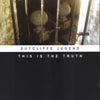 One of the pioneering noise projects of the genre's early 1980s heyday has returned with a new disc that manages to both push the brutal aspect of their discography to its natural limits while still maintaining an ear for subtlety and depth that tends to be lacking in the realms of harsh electronics.
One of the pioneering noise projects of the genre's early 1980s heyday has returned with a new disc that manages to both push the brutal aspect of their discography to its natural limits while still maintaining an ear for subtlety and depth that tends to be lacking in the realms of harsh electronics.
Ground Fault/Hospital Productions
Sutcliffe Jugend were among the creators of what is now known as power electronics and so called 'noise.' While contemporaries Whitehouse tend to get most of the credit, SJ's Kevin Tomkins' time with that band lead to some of their most violent and brutal tracks. SJ (Tomkins and Paul Taylor) has continued on and off since the early '80s, consistently trying new approaches, from pure noise (everything in the early days) to guitar based experimentation (Death Mask), each reinvention saw the duo trying something different. Following up the twin albums for Cold Meat Industries (When Pornography is No Longer Enough and The Victim As Beauty) was a difficult proposition, given the violence and brutality of those two occasionally reached comedically absurd levels (see: "Come on cunt, show me your fucking titties").
After two side project releases (the more atmospheric and experimental Between Silences and Threnody for the Victims of Ignorance, both as just SJ), Taylor and Tomkins have reinstated the Sutcliffe Jugend moniker, and the new work meshes the brutal elements of those earlier incarnations with the experimentation and compositional subtleties of the SJ work. Do not assume the violence has been overly stifled, however: the subtle musical loops of "What If" belie its violent underpinning and otherwordly vocals, and the instrumental closer "Blind Ignorance" is every bit as torturous as anything else in the duo's canon.
Beyond the harsh noise violence lies a great deal of subtlety and structure though, as well as experimentation. "This Is The Truth" features some nearly melodic, almost gospel like vocals from Tomkins with the pulsating digital noise throughout the track. Even more bizarre, "Obsession," opens with bizarre found sounds with some guitar string treatments and what almost resembles a harpsichord. Something must be said for "Pigboy" as well, one of the most hateful pieces of music I've heard, though I suspect the vocals are intended to be much more cathartic than accusatory.
Lyrically this album is an odd beast. Tomkins' shrieks and screams are often buried in layers of effects so the lyrics are not entirely clear, but an overarching theme of existential philosophy and spirituality/spiritualism seems prominent here, which is of much greater thematic depth than is usually associated with this genre. According to their Web site, a great deal of new activity is planned for the coming months, and this sharp spike in productivity should interest anyone who is a fan of difficult/violent music such as this.
samples:
Read More

